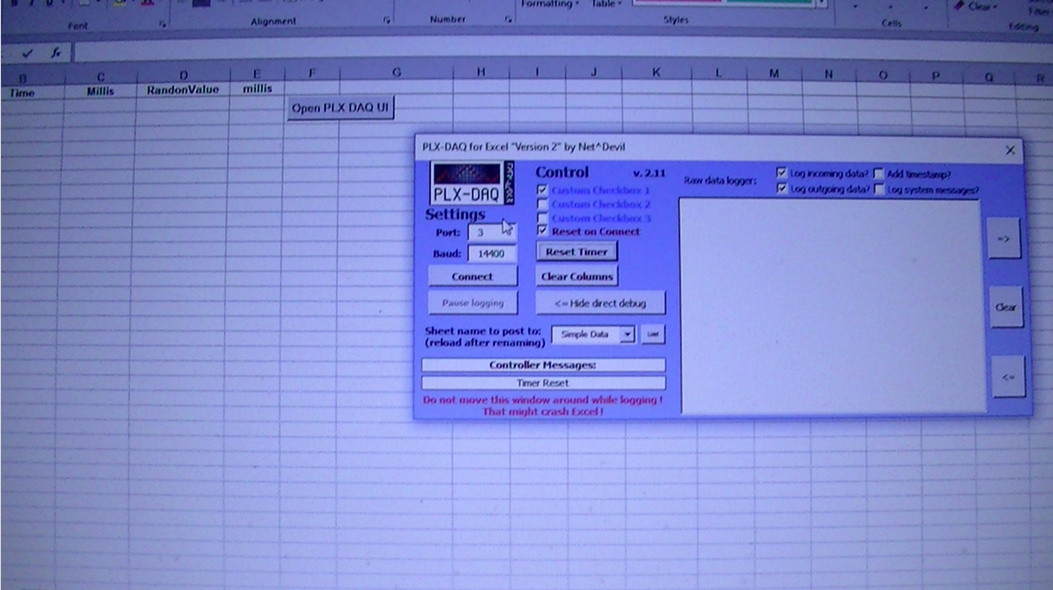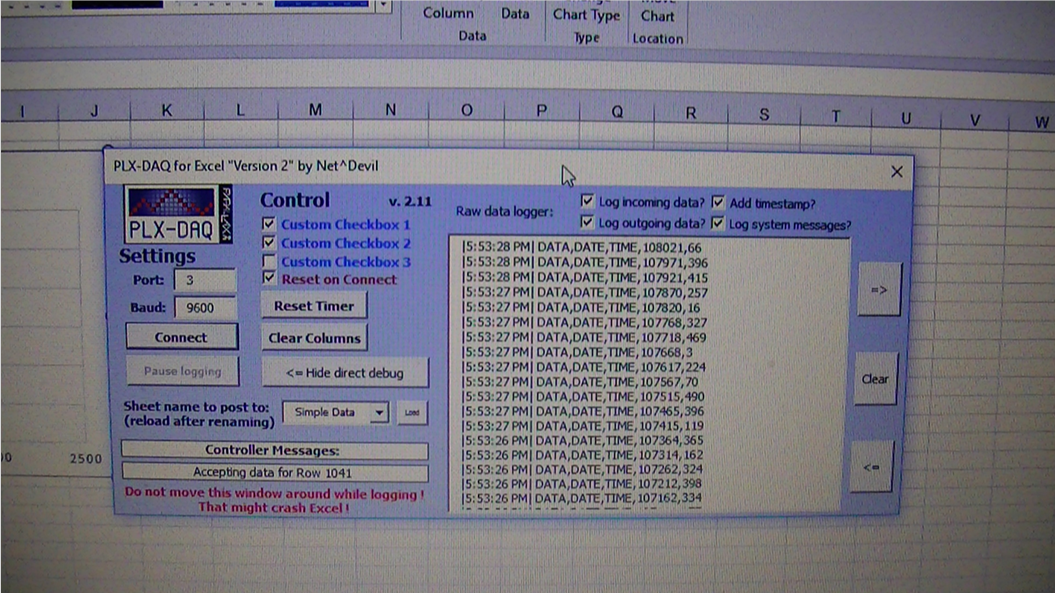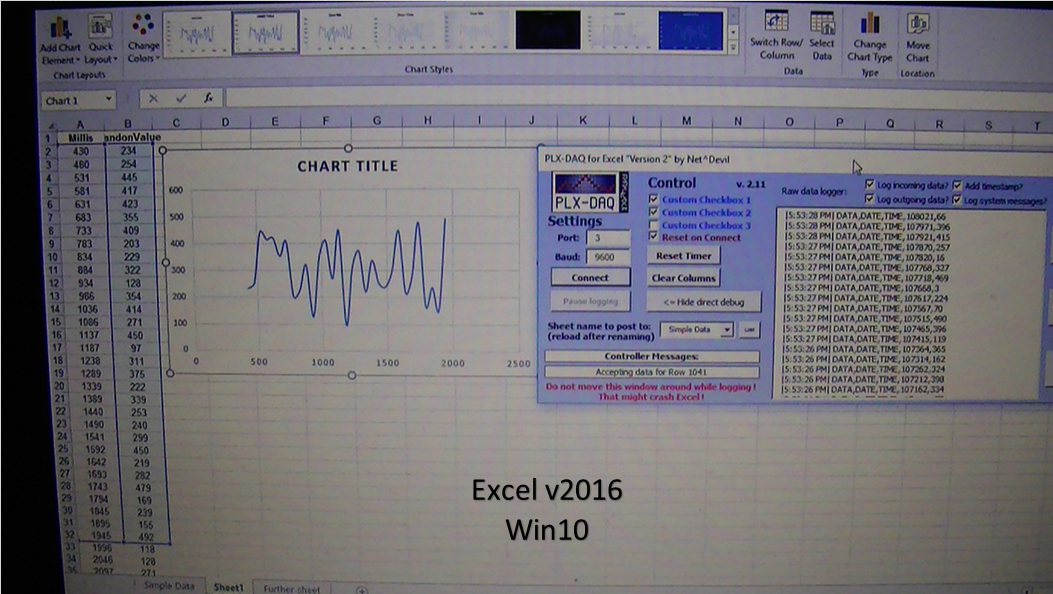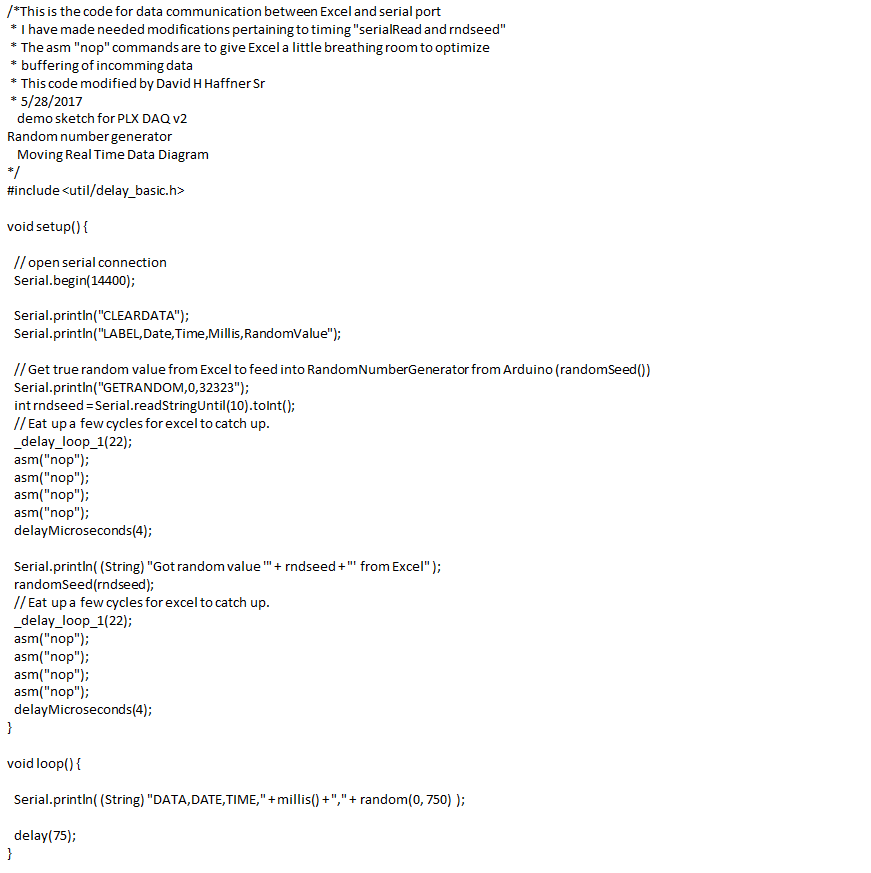UPDATE 5/30/2017 10:06:AM
I have just tested this program on my Atmega1284P Dev board and it works perfectly :)
I have Excel 2016 and Windows 10, two powerful platforms in my humble opinion, well thanks to an individual named Net^Devil over at the Arduino forums, he has a very clever program that I think perhaps has in large part solved a problem for me.
I needed an alternative way of importing my CCD data directly into Excel, his program PLX-DAQ v2 does this and is completely open sourced. I have modified the sketch of the test program which makes it a lot more stable on the Excel data side (this may not be an issue for earlier versions of windows but is for windows 10).


Here is the PLX GUI panel opened in Excel, on my Mega 2560 my com port is 3 and my baud rate is 14400 (right now any faster and excel stops working? don’t know yet)
The documentation is good and easy to set the program up.

This is the random number generator program running

All data has been imported from the Atmega 2560 into Excel, you can see the data to your left in columns A and B.

You an see here in the zoomed in view, that it makes life a lot easier when manipulating data and constructing charts all in one shot


The top chart is the raw data, and the bottom chart is a zoomed in view of the data "call outs".

This is the test code for the random # generator for the Mega 2560, I’ve added the #include <util/delay_basic.h> lib, because I needed to incorporate a few delay functions to give Excel some time to catch it’s breath. Using the demo sketch by itself Excel, at least in Windows 10 will crash, so I increased millis() delay to at least (75) and added a couple of “do nothing” cycles, and it did the trick (but only at baud 14400).
Still all in all, this is very promising and I hope to modify it so it is adaptable to my Atmega1284P MCU…Any help out there would be greatly appreciated!
My project moves ever forward! :)
 David H Haffner Sr
David H Haffner Sr
Discussions
Become a Hackaday.io Member
Create an account to leave a comment. Already have an account? Log In.